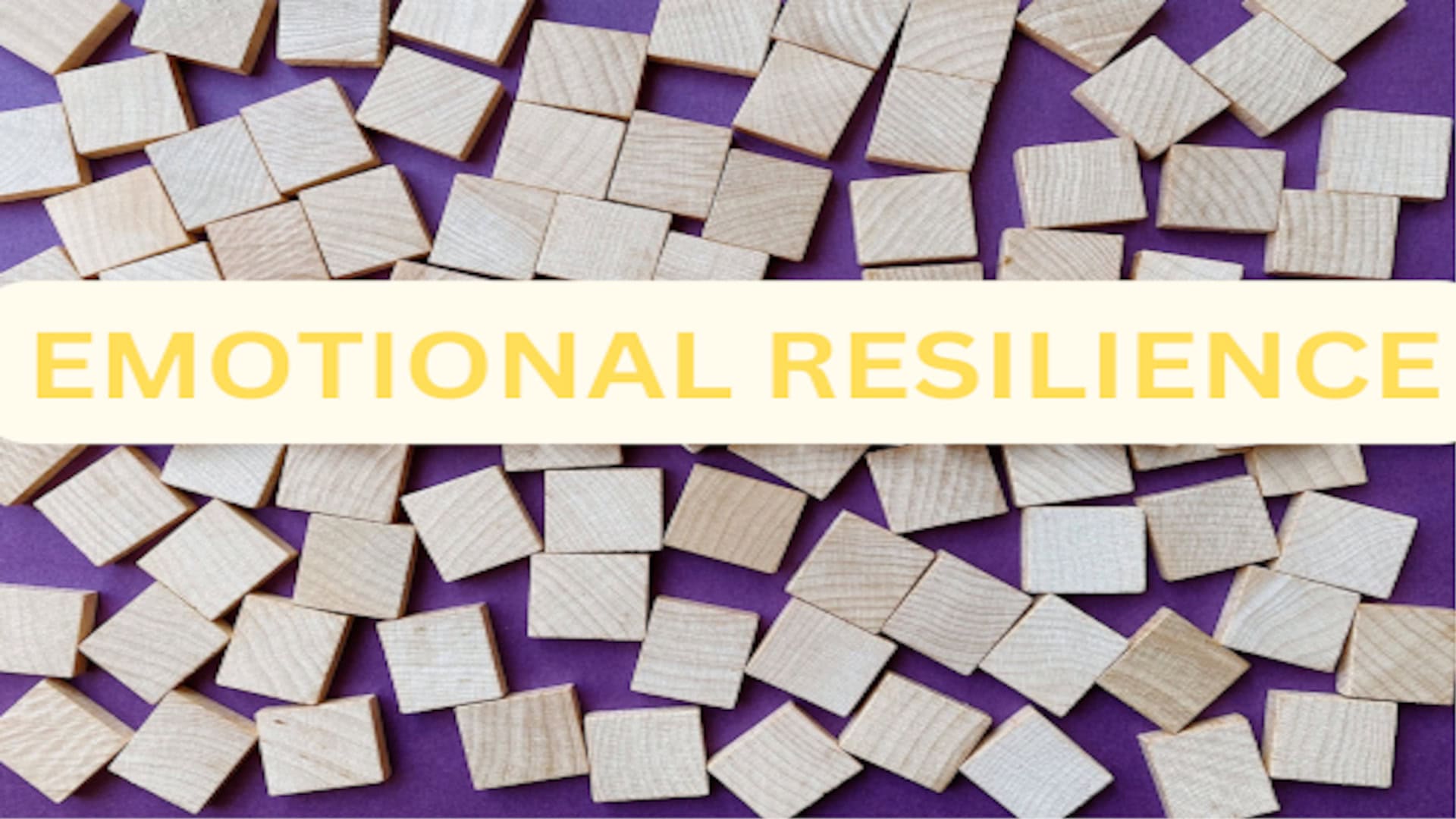In today’s fast-paced and often unpredictable world, emotional resilience has become a critical life skill. Whether you’re facing personal setbacks, workplace challenges, or broader global uncertainties, the ability to bounce back and maintain emotional stability is essential—not just for surviving, but for truly thriving.
But let’s be clear: building emotional resilience doesn’t mean ignoring your emotions or putting on a brave face all the time. It means learning how to manage your emotional responses in a way that promotes well-being, clarity, and long-term mental strength—especially when you’re feeling stuck behind mental blocks.
Based on insights from books like The Resilience Factor by Karen Reivich and Option B by Sheryl Sandberg, along with current psychological research and personal growth strategies, this guide will walk you through seven powerful ways to build lasting emotional resilience.
What is Emotional Resilience?
Emotional resilience is your brain and body’s ability to cope with stress, adversity, trauma, or life changes without becoming emotionally overwhelmed. Think of it as your mental immune system—it helps you manage pressure and recover from emotional hits.
Science backs this up: neuroplasticity, the brain’s ability to reorganize itself, shows us that emotional resilience is a skill we can develop at any stage in life. The way we interpret and respond to challenges shapes our mental and emotional health more than the challenges themselves.
1. Develop a Positive Mindset

“It’s not the load that breaks you down, it’s the way you carry it.” – Lou Holtz
The human mind is naturally wired for negativity bias—we’re more likely to remember criticism than praise, and more prone to dwell on what could go wrong than what’s going right.
To build emotional resilience, we must actively shift toward a positive mindset, not by denying reality but by reframing how we experience it.
How to Apply:
- Start a Gratitude Journal: Every evening, jot down three things you’re grateful for. This simple act trains your brain to focus on the good, rewiring neural pathways to build optimism and reduce stress. Gratitude is a proven method to boost emotional wellness and overall happiness.
- Reframe Setbacks as Opportunities: When facing a challenge, consciously ask yourself, “What can I learn from this?” This mindset shift helps you develop resilience by focusing on growth rather than defeat.
- Limit Negative Input: Unfollow or mute negative social media accounts, news outlets, or even people who consistently drain your energy. Instead, fill your mental space with uplifting books, motivational podcasts, and positive affirmations.
2. Strengthen Emotional Awareness
Understanding your emotions is the foundation of emotional resilience. When you can identify what you’re feeling and why, you’re less likely to be thrown off balance when life gets tough.
This is where emotional intelligence comes in—it helps you regulate your emotions and respond intentionally rather than reacting impulsively.
How to Apply:
- Check-In With Yourself Daily: Use tools like journaling or the Mood Meter app to assess your emotional state. Ask: “What am I feeling?” and “Why am I feeling this?” This promotes emotional clarity and improves self-awareness.
- Practice the Pause: Before reacting to something stressful, take a moment. Breathe deeply and assess your feelings. This brief pause empowers you to respond with intention rather than react out of habit—an essential skill for emotional intelligence.
- Name It to Tame It: Labeling your emotions (e.g., “I feel frustrated”) has been shown in neuroscience research to reduce the intensity of those feelings. This helps in regulating mood and making calm, collected decisions.
3. Cultivate Strong Support Systems

Human connection is a resilience superpower. Numerous psychological studies have confirmed that social support acts as a buffer against stress and emotional burnout.
In difficult times, having people who listen without judgment, offer perspective, or simply sit with you in silence can be incredibly grounding.
How to Apply:
- Connect with loved ones: Make it a priority to reach out to a friend or loved one each week. Meaningful conversations, even if short, foster emotional connection and ease feelings of isolation.
- Create a “Resilience Circle”: Identify 3–5 people you can turn to for support—friends, mentors, a therapist, or coach. These are your go-to people when times get tough.
- Join Community Groups or Forums: Whether it’s an in-person club or an online space like a mental health support group, surrounding yourself with like-minded people can offer both emotional support and practical advice.
4. Develop Healthy Coping Mechanisms

Not all coping is created equal. Healthy coping skills help you regulate emotions, while unhealthy ones—like numbing out with food, alcohol, or endless scrolling—can create long-term harm.
Resilient people don’t escape their emotions. They channel them into activities that soothe and restore.
How to Apply:
- Schedule Regular Physical Activity: Aim for 30 minutes of movement daily—whether it’s walking, dancing, yoga, or cycling. Exercise is a natural mood booster and helps in managing anxiety and depression.
- Create a “Calm List”: Identify activities that relax you—reading, painting, gardening, listening to calming music—and commit to doing at least one of them daily as a form of emotional reset.
- Limit unhealthy habits: Avoid excessive alcohol, junk food, and screen time, which can contribute to mental fatigue.
- Use the 3-2-1 Technique: In moments of overwhelm, identify 3 things you see, 2 things you hear, and 1 thing you feel. This grounding technique helps you manage emotional overload and return to a state of calm
5. Enhance Problem-Solving Skills
Life throws curveballs. Whether it’s a missed opportunity, a career pivot, or a personal crisis, resilient individuals focus on solutions, not just the problem.
By viewing obstacles as puzzles to solve rather than permanent roadblocks, you increase your sense of control—and with it, your confidence.
How to Apply:
- Break problems into smaller steps: Large challenges can feel overwhelming, but breaking them down makes them more manageable.
- Use the “What If… Then What?” Strategy: Map out possible outcomes for a problem and how you’d respond to each. This builds mental preparedness and reduces anxiety around the unknown.
- Apply the “ABCDE” Model: From “The Resilience Factor,” this model helps you identify Adversity, Beliefs, Consequences, Disputation of negative beliefs, and Energization that results. It enhances resilience through cognitive restructuring.
- Learn from failures: Viewing setbacks as opportunities for growth shifts the focus from self-blame to constructive learning.
- Celebrate Micro-Wins: Every small step toward solving a problem deserves recognition. This reinforces a growth mindset and motivates you to keep pushing forward even during setbacks.
6. Practice Mindfulness and Meditation

The practice of mindfulness—paying attention to the present moment with non-judgmental awareness—is one of the most effective ways to build emotional resilience.
Mindfulness rewires the brain to handle stress more calmly and helps us stay grounded during emotional storms.
How to Apply:
- Daily meditation: Start with just 5–10 minutes of mindfulness each morning can reduce cortisol levels and improve emotional regulation.Use guided meditation apps like Headspace or Insight Timer to make the process easier and more engaging.
- Use the 5 Senses Technique: When feeling overwhelmed, ground yourself by noticing 5 things you see, 4 things you hear, 3 things you feel, 2 things you smell, and 1 thing you taste. It’s a simple but powerful mindfulness tool for emotional stability.
- Incorporate Mindfulness into Routine Activities: Practice being fully present while brushing your teeth, eating, or walking. This strengthens your ability to stay grounded even during stressful situations.
7. Prioritize Self-Care and Well-being

Let’s put this simply: you can’t pour from an empty cup. Self-care is not indulgence—it’s maintenance for your mental and emotional health.
When your basic needs are met, your capacity to deal with stress increases significantly. Emotional resilience flourishes in a well-nourished, well-rested body.
How to Apply:
- Create a Daily Self-Care Checklist: Include hydration, nutritious meals, at least 7–8 hours of sleep, and short breaks throughout your day. These habits are the foundation of emotional and mental resilience.
- Set Digital Boundaries: Designate tech-free hours, especially before bed. Limiting screen time helps improve sleep quality and reduces stress from information overload.
- Practice the “HALT” Check-In: If you’re feeling off, ask if you’re Hungry, Angry, Lonely, or Tired. Meeting these basic needs can prevent emotional burnout and help you return to a balanced state.
Conclusion
Emotional resilience isn’t a personality trait—it’s a daily commitment. It’s how you think, feel, and act in the face of adversity. And the good news? It can be built, strengthened, and reinforced over time with intentional practice.
By shifting your mindset, regulating your emotions, seeking support, and taking care of your mental and physical health, you build a toolkit that helps you rise—not crumble—under pressure.
Ready to Become More Resilient?
You don’t have to figure it all out on your own. If you’re feeling overwhelmed or stuck, personalized coaching can help you develop emotional resilience strategies that fit your life and goals.
📅 Book a consultation today and take the first step toward becoming emotionally stronger, mentally grounded, and more confident in handling life’s challenges.
If high-level leaders and executives turn to coaching, maybe it’s time you consider it too—even CEOs have coaches.
Because resilience isn’t about being invincible. It’s about being human—and rising anyway.









0 Comments